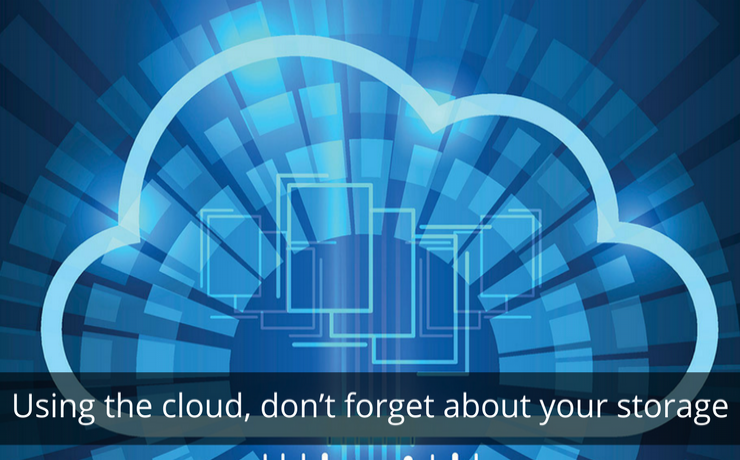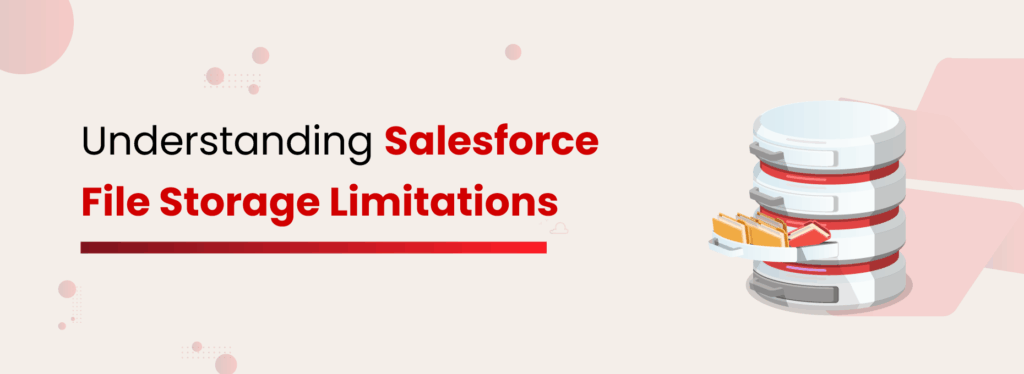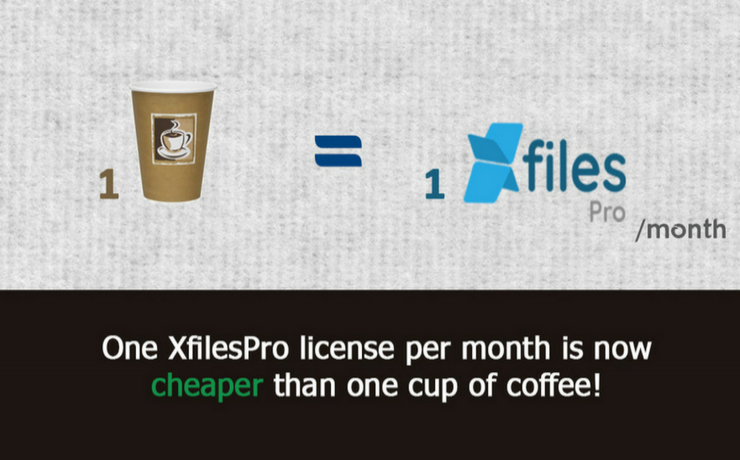Using the cloud, don’t forget about your storage

As when we get down into a conversation with the executives about cloud, very often one misconception is held, that cloud simply means a computing platform. However, the conception is not very surprising as the computing part carries the application that is visible for everyone. This is however one of the major roles played by the cloud. Also read-Why Must Salesforce Admins Monitor Their Salesforce File Storage? Today we will discuss about one more component, of the cloud, which is equally important; if not more than the computing part. This is one layer that holds and controls all the data that are created and consumed by the applications. Hence, it can be said that cloud storage is highly critical, as the modern cloud architecture pattern requires applications to store data within a separate persistent service, rather than locally in the application. To put it in other words, good cloud practices always encourages the creation of a stateless architecture, that completely prevents the data from being lost. However, making the cloud computing decision is not an easy one – cloud relatively provides for limited computing options. But the storage domain is quite complex with several and persistent storage options. Moreover, each of them have a different structure, usage and function. How to determine the best cloud storage option for your business purpose? The fact is that, selecting the perfect storage option is not something to be done within a whim. It is something so complex that an independent and strategic approach is required to consider tradeoffs across major five dimensions. These dimensions are the following: The storage cost per storage unit Storage as well as the retrieval performance The storage availability and durability The process of adaptability of storage structure and access The major storage security So, the next question that arises is which type of cloud storage is best? Let’s look at some of options and their pros and cons: Disk Pros: The fast access to data and as well exclusive usage by each of the compute instance Cons: Quite a limited growth without any kind of interruption after initial provisioning Caching Pros: It can always be shared among multiple compute instances and provides rapid access to data Cons: Requires the application development knowledge to be used effectively File Pros: Provides the highly scalable, durable structure of files, can grow on demand and is easily shared Cons: The access time is slower with higher latency; requires some high-bandwidth network The bottom line Hence, it can be concluded that whenever you create a cloud solution, it is always necessary to sort through many cloud storage, as well as the persistency services to choose the correct form for your business. This selection requires planning and consideration what most organizations initially anticipate, and certainly this is more than what’s required to make the correct cloud computing choice. Hence, the requirements must be carefully thought about before selecting the storage solution. To know more about XfilesPro , get in touch with our team. Check the AppExchange page here. AMARLAL
Understanding Salesforce File Storage Limitations

Over the past two decades, Salesforce has established itself as the leading CRM provider worldwide. Thousands of businesses, both large and small, across various industries have used it to enhance their sales and service processes. Salesforce offers numerous benefits that contribute to consistent and smooth performance. However, some functionalities are limited to maintain high performance and reliability. And one of the most noticeable limits is related to file storage. In this blog, we’ll take a closer look at Salesforce’s file storage limits and explore some of the key challenges businesses often face. How Salesforce File Storage Works Whenever users upload, generate, or receive files, such as documents or email attachments, in Salesforce, those files are stored in the platform’s primary storage. This applies to both standard and community users. By default, Salesforce provides 10 GB of file storage per org for editions like Contact Manager, Group, Professional, Enterprise, Performance, and Unlimited. The Essentials edition, however, includes only 1 GB per org. On top of this base storage, additional file storage is allocated per user license, depending on the edition. Enterprise, Performance, and Unlimited editions receive an extra 2 GB of storage per user license, while Contact Manager, Group, and Professional editions get 612 MB per user license. If you’re interested in understanding Salesforce file storage pricing in detail, be sure to check out the comprehensive breakdown available. Common Challenges with Salesforce File Storage Salesforce enforces specific limits on file sizes and sharing to ensure smooth platform performance and data security. These limits impact your storage management and collaboration workflows. Therefore, knowing them helps you plan smarter and avoid surprises. Salesforce File Size Limit Salesforce doesn’t only have limited storage space – it also restricts the size of individual files that can be stored within the app. Below are the file size limits: Salesforce Files (like files in libraries, Chatter, and on records): up to 2 GB per file Attachments (on records in Lightning Experience): up to 2 GB per file Documents, Knowledge Attachments, and Chat files: up to 5 MB per file So, even if you have enough storage overall, some files might be too big to upload. It’s important to keep these limits in mind when managing your files. Salesforce File Sharing Limits Apart from the above limits on storage and size, there is also a limit on how many times a file can be shared. This stands at 2,000 times, including sharing with records, people, and groups. Consequences of Ignoring Salesforce File Storage Limits For businesses generating a high volume of files or large-sized files within their Salesforce environment, running out of allocated file storage is inevitable. As storage nears its limit, users like sales reps and service agents begin to face delays and disruptions in their daily operations. Uploading new files becomes a challenge, leading to slowed workflows, hindered customer service, and, in severe cases, a breakdown in core business processes. To make matters worse, purchasing additional storage from Salesforce can be expensive. There’s also the issue of file accessibility; anyone with the link can view a file, even if they’re outside the Salesforce team, posing serious risks for sensitive or private information. Exceeding Salesforce file storage limits doesn’t just affect performance; it increases costs and security concerns. How to Get Around the Salesforce File Storage Limitations? Once you encounter the above challenges, it becomes essential to seek possible solutions to prevent exceeding your Salesforce storage limits. When you analyze all the options, you can categorize them into three main categories: Option 1: Purge some old files to optimize your storage Option 2: Upgrade storage by paying an additional cost to Salesforce Option 3: Move files to a relatively low-cost and long-term external storage space without losing access to your files If you are considering the first option, deleting older files from the org, it is advisable to consult the compliance team. In many cases, internal policies and regulatory requirements prohibit the deletion of data and mandate long-term retention. Hence, file deletion is rarely a sustainable solution, as ongoing business growth will continuously generate more data. The second option, purchasing additional storage from Salesforce, also presents challenges. The added storage cost is significantly high, and frequent upgrades put a strain on the IT budget. The Smart Way Forward: External File Storage Integration If you’re looking to manage
One XfilesPro License Cost is now less than a cup of coffee – How?

Are you still stuck with that Extra storage space in Salesforce? If yes, then it’s time for you to think again!! Today let us discuss about some ways in which, you can reduce that extra payment to Salesforce. Selecting the appropriate CRM system has been a daunting task. This is indeed considered as one of the most important and effectual decision for business owners. It is highly necessary to evaluate each considered solution before settling down to any platform. One of the crucial factors for such surveillance is the huge cost. XfilesPro is proud to take you to a tour of the various ways with the help of which you can achieve best Salesforce cloud storage solutions. Such additional expenses may lead the user to pay more at the end of the day with twice the amount which was initially intended. One such instance is, Salesforce. Users must know that over the years, business ventures have been growing with Salesforce, so does their data and files. Hence, a limit in the storage capacity arrives eventually. XfilesPro assists you to store all your files with ease and simplicity within an external storage of your own choice. Also read: Are You Still Paying Additional Salesforce File Storage Cost? XfilesPro claims, to save almost 45% of your native Salesforce storage cost and having the license cost per month even cheaper than a cup of coffee. But the question is how? Let us have a look. The Productive Approach Seamlessly integration with thousands of apps can store your files safely with XfilesPro. Amazon S3 and Google Drive storage options, combining with more, to apprehend an intelligent Salesforce file storage app, XfilesPro works for the faster results. Hence, less storage cost. The Easy Mobility Option Deeming with the access to securely move your files XfilesPro claims to save your thousands of dollars. Just as it is done on your desktop, users can attach any number of files via the attachment section. Case Logs, Legal Docs and even Marketing Collateral can be quickly added. Therefore, you do not have to add any further expenses to store such important documents. A Simplified Control Compliance and governance have been a seamless part of the way you work in the clouds, XfilesPro is said to quickly manage all the documents, along with easing up the existing storage facility at the same time. Just install the app, configure the storage option and you are ready to reduce the Salesforce storage usage to 90%, along with viewing all your existing files in Salesforce. Folder Hierarchy Organized and synchronized in the way to manage files, XfilesPro allows for managing all files and sort the data in an order desired. Searching for files in a vast ocean is like indeed finding a pin, hence the Folder Hierarchy, steps in and links all the object to the respecting folders. This makes XfilesPro more user-friendly and less complicated. Lightning Customized Component As seen XfilesPro have been guided with many essential features for its users. One of the most unique feature is to let use or re-use or even integrate any standard or custom object, applications, third-party application, communities, Salesforce1 or any other VF page. Upgraded and completely modified. To know more about XfilesPro , get in touch with our team. Check the AppExchange page here. AMARLAL

